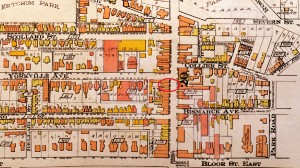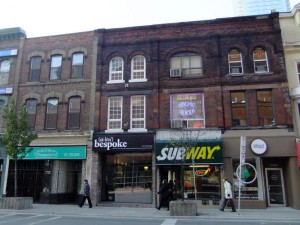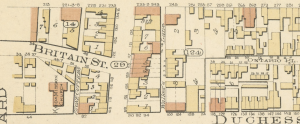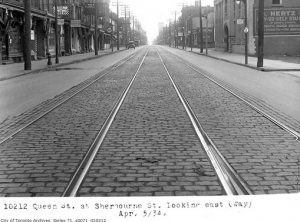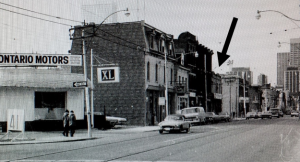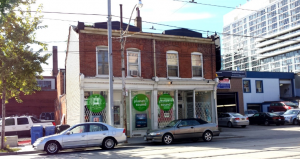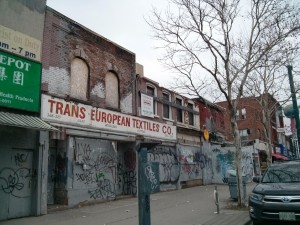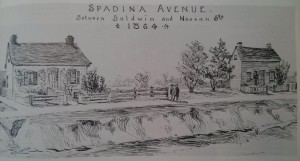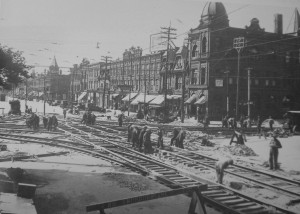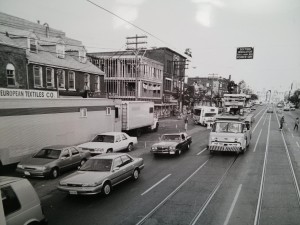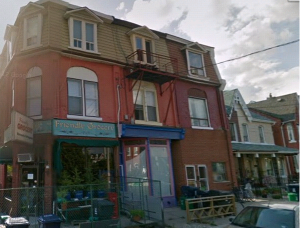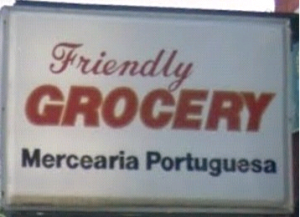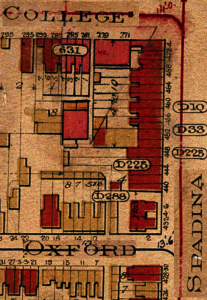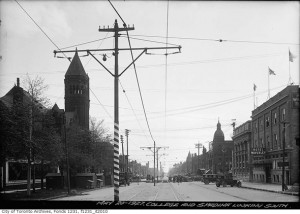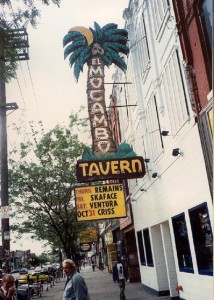The Chinese in Early 20th Century Toronto: 846 Yonge Street
846 Yonge Street has a multifaceted and rich history, hosting operations as a laundry facility, auto mechanic garage, a Canadian Tire in 1955 and most recently as the hair-styling Salon Bespoke, the establishment that occupies the building today. Valerie Mah’s invaluable manuscript The Bachelor Society confirms the scant details known about operations at the turn of the previous century. As of 1899 the property was merely designated as a nondescript Chinese Laundry, but circa 1900 was listed as being rented to a specific Chinese entrepreneur. The registered owner of the building, James Weir, lived just down the street at 783 Yonge Street. It is interesting to note that that at the young age of 23, one Lee Kam You is documented as the presiding business owner at that time. There were a total of 4 residents listed as living at the premise, but only Lee Kam You’s name and details were to be found in historical accounts of the time. As of 2014 the whole adjoining stretch of commercial properties, ranging from 838-848 Yonge Street, was purchased by Bazis International for development of the newly conceived 1 Yorkville Condo Project. Previously valued at $1,474,000 in the 2014 Toronto Tax rolls, the proposed plans thankfully include a conservation strategy to preserve the heritage commercial building properties gracing the front area of Yonge Street, dating back farther than even the dawn of the last century.
Works Cited
Assessment Rolls: Ward 3 Division 3. 1899-1900. Toronto Archives. Microform.
Goads Fire Insurance Plan (1913, plate 1a). Web. Obtained 05/02/2014 from http://www1.toronto.ca/wps/portal/contentonly?vgnextoid=04ab757ae6b31410VgnVCM10000071d60f89RCRD&vgnextfmt=default#central
Mah, Valerie. The Bachelor Society: A Look at Toronto’s Early Chinese Community from 1878 – 1924 (unpublished, 1978).
Staff report for action – Preliminary Report – 836-850 Yonge St/1-9A Yorkville Ave. Web. Obtained 05/11/2014 from http://www.toronto.ca/legdocs/mmis/2014/te/bgrd/backgroundfile-64732.pdf
Toronto City Directory. 1899-1900. Toronto Archives. Microform.


